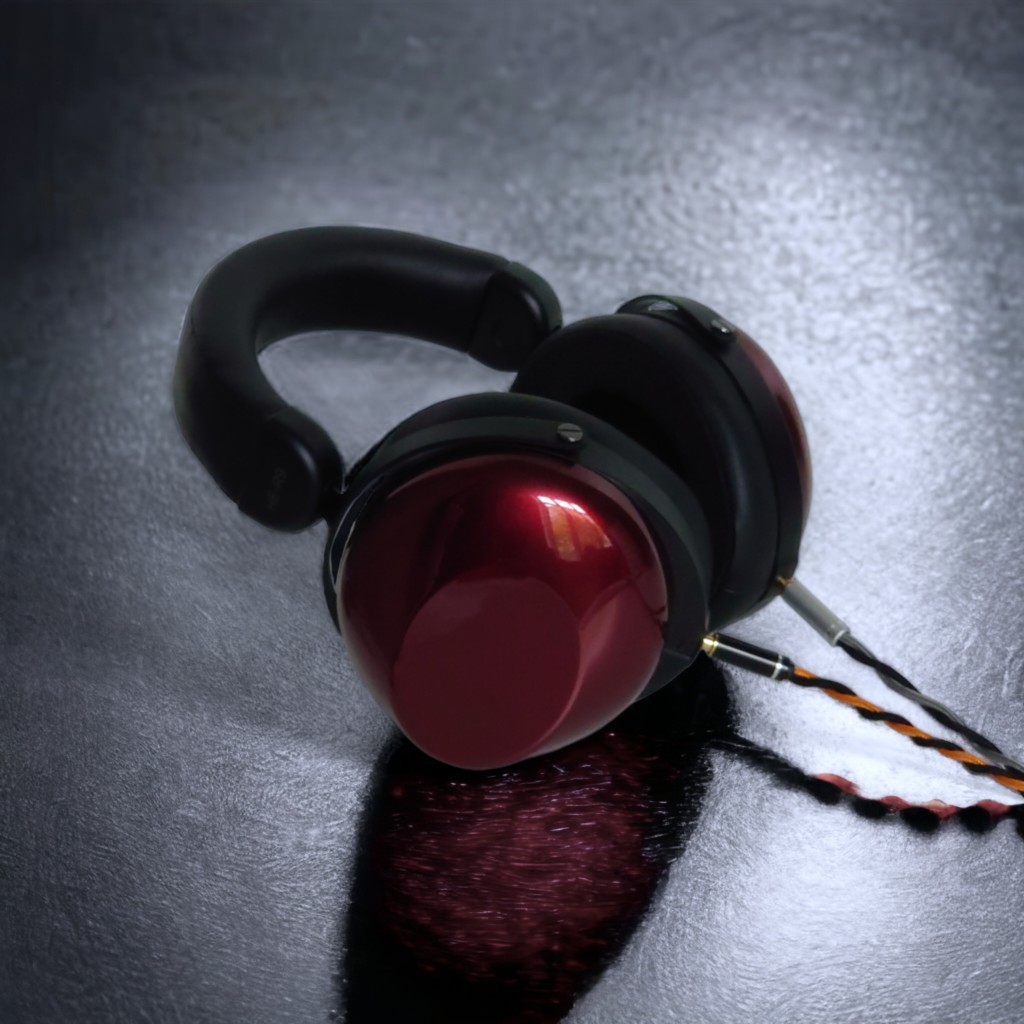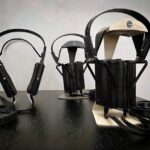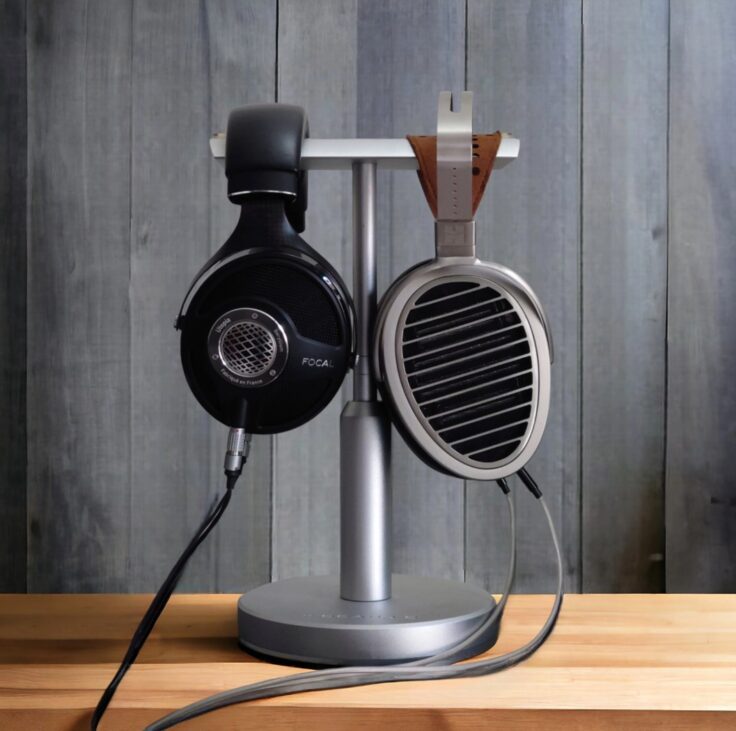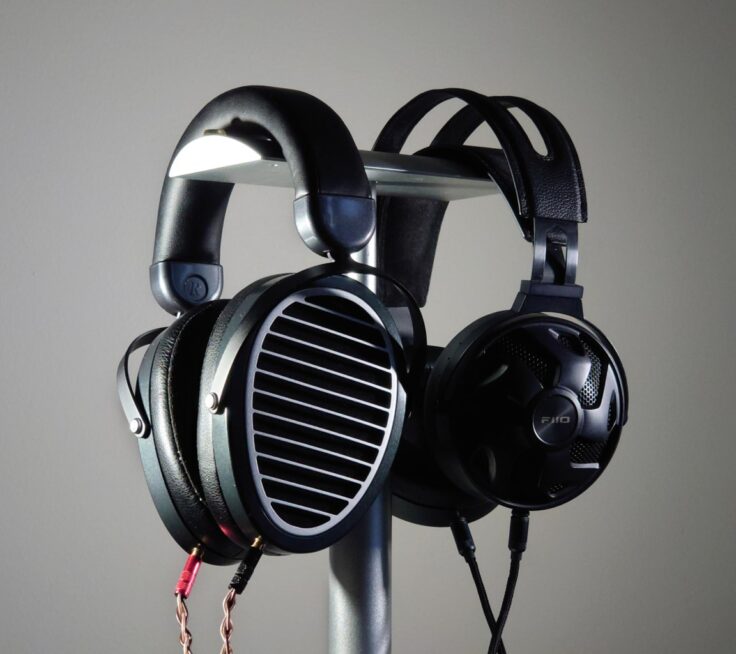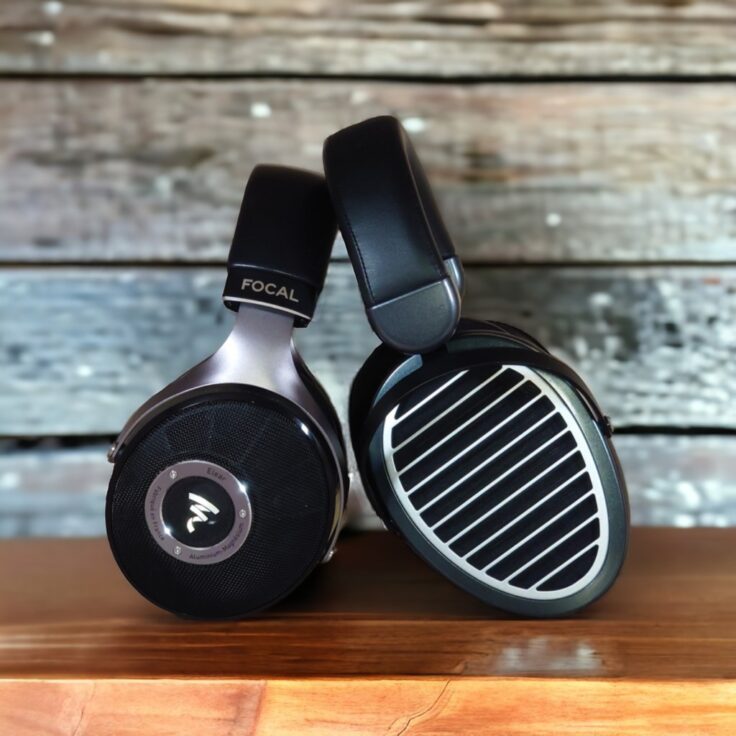The HE-R9 is a closed-back, dynamic headphone. It has very large ear cups and the design is heavily inspired by the legendary Sony MDR R10. Actually, Hifiman made a homage to the R10 with their HE-R10, which features wooden cups like the original. The HE-R10 comes in both dynamic and planar magnetic driver versions (often referred to as R10D and R10P). These are way more costly than the R9, especially the planar magnetic version. It is not only the Sony MDR R10 this headphone gives tribute to, though. The crimson-coloured ear cups are a tip to the hat to the Fostex TH-900, another legendary closed-back headphone.
The HE-R9 was launched at $599 but recently has seen some extreme price drops to way below $200. This tells us two things: The R9 didn’t sell much at the initial asking price, and Hifiman is willing to reduce prices heavily to accommodate the actual market demand. Respect, Hifiman! That’s how supply and demand is supposed to work.
This page is supported by users when they donate or use affiliate links to shop for anything on Amazon via our link here .
You can check out the current asking price of the HE-R9 here.
BLUEMINI BLUETOOTH ADAPTER
Hifiman has developed a Bluetooth adapter that you can plug into several of their headphones. I don’t have the Bluemini available for this review, so I can only refer to other sources. From what I have read it delivers quite a good performance. The way it works is that you plug it into one side and because this side has a TRRS female jack, it can route the audio signal to both sides. Similarly, you can actually get an audio cable that enables you to have it plugged into one side only. At the same time, you can use most 3.5mm plug two-sided headphone cables. Pretty clever, I think.
SPECIFICATIONS
- Style: Closed-Back
- Cable: Single Entry Balanced 3.5mm TRRS or Single Ended Dual 3.5mm TRS
- Transducer Type: 50 mm “Topology Diaphragm” Dynamic Driver
- Frequency Response: 15 Hz to 35 KHz
- Sensitivity: 100 dB/mW
- Impedance: 60 ohms *
- Weight: 328 grams
- *Impedance was previously 32 Ohms but now it is apparently 60 Ohms
WHAT’S IN THE BOX
- HE-R9 headphone
- Dual entry single-ended 3.5mm headphone cable with 1/8″ Jack and 6.35mm adapter
- Simple headphone stand (styrofoam)
OPTIONAL BLUEMINI R2R (not reviewed) – SPECS:
- DAC: HIFIMAN HIMALAYA
- Frequency Response: 20hz – 20kHz
- Signal-to-noise ratio: 114dB
- Battery life: 8 hours
- Net weight: 25g
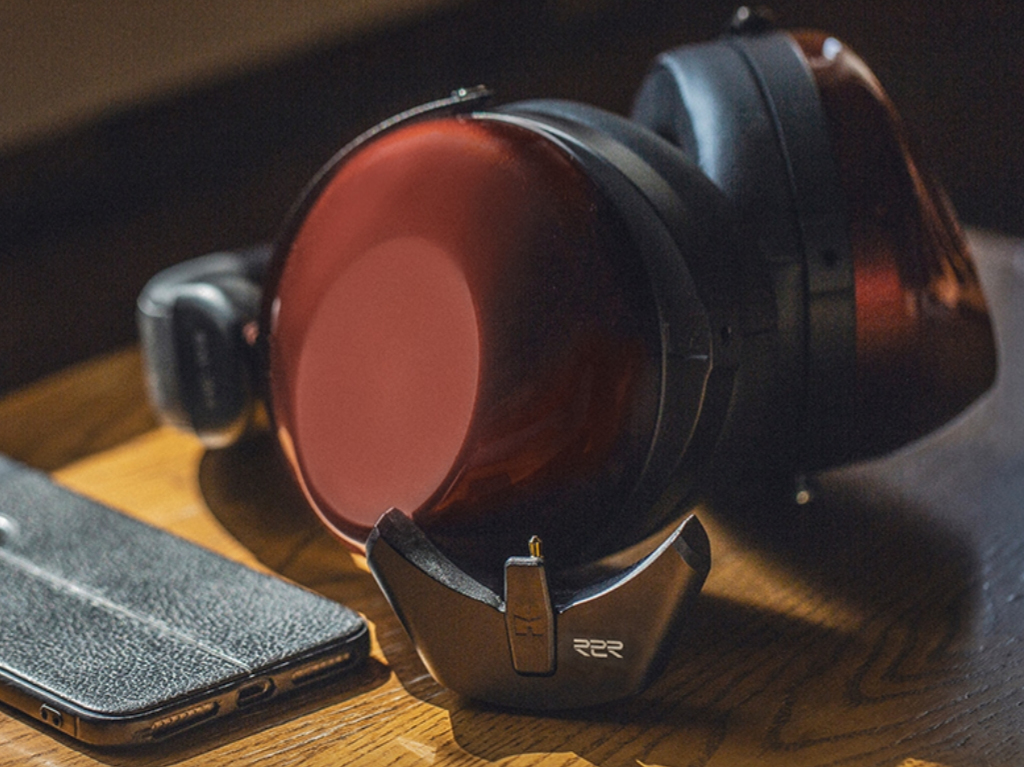
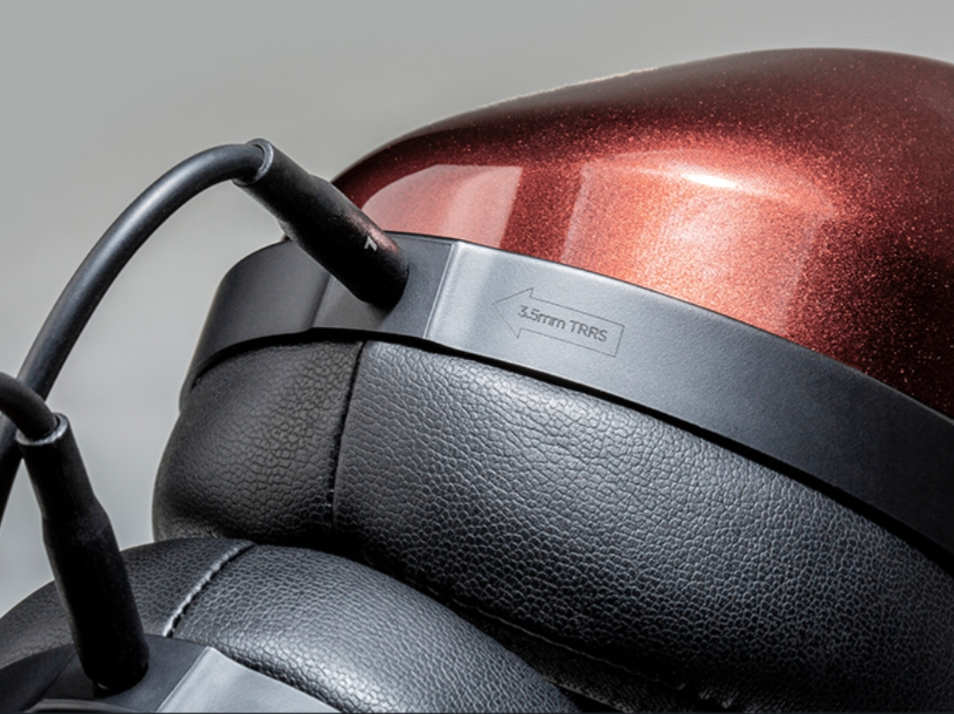
DESIGN AND BUILD QUALITY
The headband is covered by real leather with memory foam underneath. I think the foam could be less firm, but the headband is still comfortable for me. The internal headband structure is made of steel and feels robust.
The large crimson red ear cups are designed to give good acoustic conditions for the driver. They are not made of wood like the R10s, but rather some sort of plastic/composite material. They feel rigid and solid, though.
The Hifiman HE-R9 and 10D use a proprietary driver with “Topology Diaphragms”, an advanced voice coil and Neodymium N52 magnets. Neodymium is the strongest known rare earth magnet material, and N52 is among the highest grades of neodymium; consequently, N52 magnets are some of the strongest magnets on the planet.
The “Topology Diaphragm” technology refers to a special nanoparticle coating that gives the diaphragm better acoustic performance. Hifiman founder Dr. Fang Bian has developed this as a spin-off from his PhD thesis about the properties of nano-materials. By carefully controlling the diaphragm surface structure, you can yield different results in acoustic performance.
The headphones are very light and comfortable to wear despite the size of their ear cups. The clamping force is moderate, just perfect for my medium-sized head. The pads are soft memory foam with pleather on the outside and inside and mesh on the face that touches the skin. Their inner diameter is generous but the pads aren’t too deep. The pads are user-detachable, but the attachment mechanism is proprietary. Passive sound isolation is quite good.
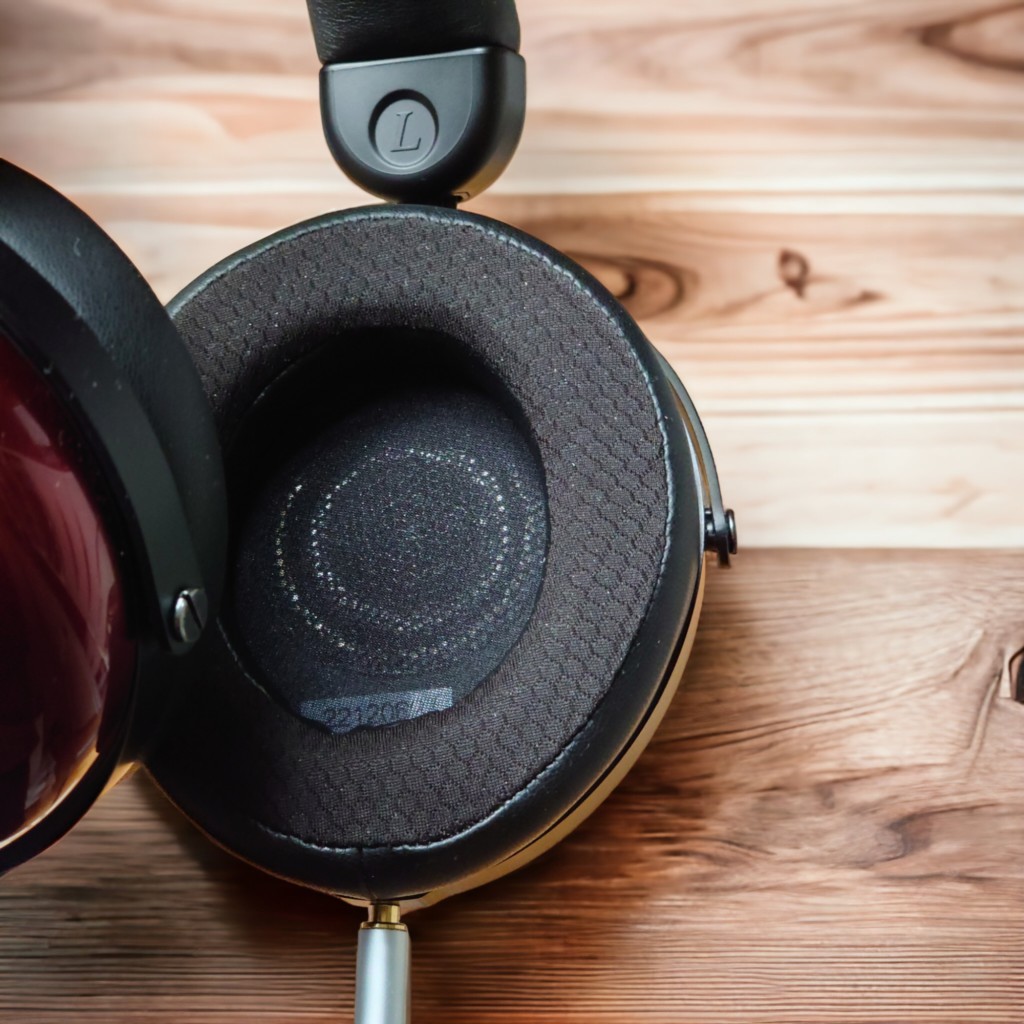
LISTENING IMPRESSIONS
First I want to say that I made sure that these headphones were fully broken in before I started listening. I let them run in for more than 48 hours before listening to them.
As you will see when I get as far as the comparisons, these headphones are not close to being what’s normally described as neutral sounding. That does not mean that they can not be enjoyable. In the following, I will give my subjective listening experiences as well as I can in relation to nothing but my own experience then and there. I’ll do some comparisons later.
AURALIC TAURUS AMPLIFIER
Zigzag Blues by Celiné Bonacina
The Alto-Saxophone is so full-bodied, warm and deep that it’s really a joy to listen to. The electric bass and bass drum play together and it sounds really physical. The soundstage is quite open and wide. The mid-range is sweet and has a nice amount of body, the treble is non-offensive.
10:15 On a Saturday Night by The Cure
The presentation is quite spacious, both wide and deep. The bass is strong and full. I’ve heard it tighter, but I like it. The treble has good detail but isn’t the crispest and brightest there is. This isn’t a headphone for treble heads – which suits me fine.
Richter 858-3 by Bill Frisell
This is almost only strings, although Bill joins in very subtly in the background. The piece sounds wonderful with the R9. Full-bodied and airy. Just right.
All For Us by Labyrinth
The massive bass is even more massive than usual. The vocals are pleasant and not recessed. The treble is polite but not subdued.
Almost Like the Blues by Leonard Cohen
Again the bass is pretty dominating and in this case, it might be too much. It feels a bit bloated like there’s some resonance in the cup chamber that’s not acoustically controlled. In effect, Cohen’s voice is getting a bit overpowered by the bass. In my experience, however, there are (with some expectations) always some frequencies that make this happen with closed headphones with a lot of bass. If I EQ the bass down 6dB, it sounds much better, though. ,
Angel by Massive Attack
Another bass-heavy track. Here, the bass doesn’t “bleed” into the midrange. It’s just very enveloping. The soundstage is quite open. This does not sound like a closed-back headphone, except from the bass. Such bass is impossible to get with open constructions. The treble, especially percussion, is polite but with detail and presence.
If I Took Your Hand by Fire!
The small percussive elements in the opening are nicely rendered and with a satisfying amount of treble detail. The standing bass is powerful, or rather massive, to be more precise.
Lovers On The Sun by David Guetta
Finally, a headphone that sounds good with this track! The bass is powerful, and the usually overly bright and harsh vocals and percussion are held in check. Separation is good. EDM is great stuff on these cans.
As Before by Olga Konkova
The Cajôn punches delightfully full-bodied. The female vocals are very present and nuanced. The piano sounds great too and it is clear but I would not call it crisp.
Identikit by Radiohead
Starting with the bass, it’s full and punchy without disturbing the vocals or other elements in the music. The soundstage is quite large.
Azulejos by Populous
The bass is very powerful but it’s not disturbing the rest of the frequency spectrum, everything is nicely separated. The presentation is also very spacious.
Prokofiev Violin Concerto no.2 op. 63 by Janine Jansen
Time for some orchestral music. I was initially thinking that these headphones are not especially suited for this genre but I think I was wrong. The strings have a good amount of body, there’s detail and texture, space between instruments and an open soundstage. The kettle drums sound a bit bloated, but at the same time, it’s nice to really feel them. Actually, if you put your hands on the headphone cups you can really feel the bass vibrations in your hands.
EQUALIZATION
I am not a big user of EQ. Not because I don’t see the point but because I focus on the headphones as they are made, rather than finding the optimal EQ settings. There are others that can help you with that. However, I am open to experimenting a little bit when the headphones I am testing have significant frequency response deviations. Because if it is not clear or already, this headphone is really bass-heavy… However, when I used the equalizer on my RME ADI-2 DAC FS to adjust the bass down 6 dB it worked like a charm. The bass gets less prominent and feels more detailed and textured. With e.g. “Almost Like the Blues” by Leonard Cohen, there is no longer a problem that the bass is overwhelming the presentation and bleeding into the mids. It is telling something, however, that when reducing the bass with 6 dB, the HE-R9 still isn’t a bass-light headphone.
I run through quite a bit on my playlist with the bass at -6dB and find it quite enjoyable. The bass is relatively neutral and with good texture and detail. It’s always easier to EQ something down than up, so if you buy these cans, the bass can indeed be reduced successfully with some EQ.
WRAPPING IT UP
Treble: This is not a headphone for treble heads. It’s what most people would call dark-sounding. However, I personally find that the treble has nice detail and presence. I often prefer slightly dark sounding headphones so this is not totally unaligned with my preferences.
Mid-range: I think the mids are presented very nicely with a quite natural timbre, relatively speaking. They are not recessed, and even though the bass is strong, it seldom bleeds upwards into the mids. Whether it is vocals, saxophones, strings or the piano, I think they come through nicely with good detail, weight and body. They are, however, slightly “thick” sounding. If you don’t like the mids of the HD650, you won’t like these either – but I do.
Bass: There is no reason to EQ a “bass shelf” on these cans, rather the opposite. Usually, I find the bass very enjoyable, though. There is, however, more quantity than quality bass. This isn’t exactly the HE-6, and the bass detail and texture aren’t top-notch. EQ-ing down the bass quantity increases the quality.
Soundstage: I actually find the soundstage to be pretty wide and deep. There is good separation between instruments except when the bass is too overwhelming.
Timbre, sound signature and tonality: The typical sound signature for headphones with lots of bass is a V-shaped frequency response curve where you boost both the bass and the treble to get artificial clarity at the cost of the midrange which subsequently becomes recessed. That is not the case with these headphones. The midrange and the treble are neither boosted nor especially recessed – although the treble is quite polite. I was surprised to find how well this headphone presented classical string music. The violins really sound full-bodied with good timbre, texture and tactility.
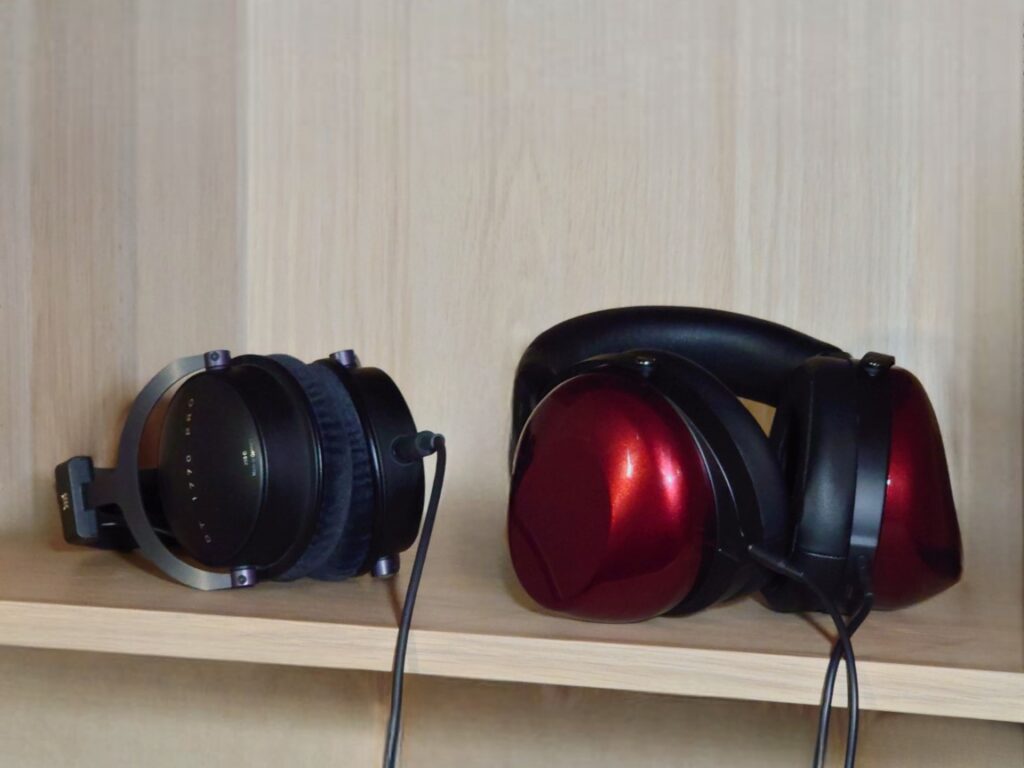
COMPARISONS
This headphone is a bit tricky when it comes to comparisons because there are not that many around aiming to do the same thing.
Many closed phones in this price range are compact and meant for portable use. Some of the most popular closed headphones in the price range are Beyerdynamic DT770 PRO, Audio Technica ATH-M50x Sennheiser HD569 and HD599 and AKG 371.
Those are all smaller than the HE-R9, tuned to be more neutral and better for portable use. The HE-R9 is something for itself.
I do not have any of the above-mentioned headphones at hand. There are, however, some headphones I currently own that I really think it would be interesting to compare the HE-R9 to:
DENON ADH-D7100 VS HE-R9
The former flagship D7100 is known for its heavy bass. I had to swap the pads for my set and with the new pads the sound is slightly less bass-heavy.
Now in comparison, it’s revealed that the sound is totally different. The D7100 is brighter, much more treble and upper midrange. Coming from the HE-R9 I think the d7100 sounds thin and brittle. Going the other way the HE-R9 is far thicker and warmer sounding. The only thing they really have in common is the bass. The D7100 doesn’t hold back the bass quantity.
Anyway, the HE-R9 sounds a lot darker, but also more coherent. Neither of these are neutral sounding. Detail is clearer with the Denon, but honestly, I often like the HE-R9 more overall. The D7100 sounds great when the music doesn’t push the frequencies that trigger it to go full bass mode.
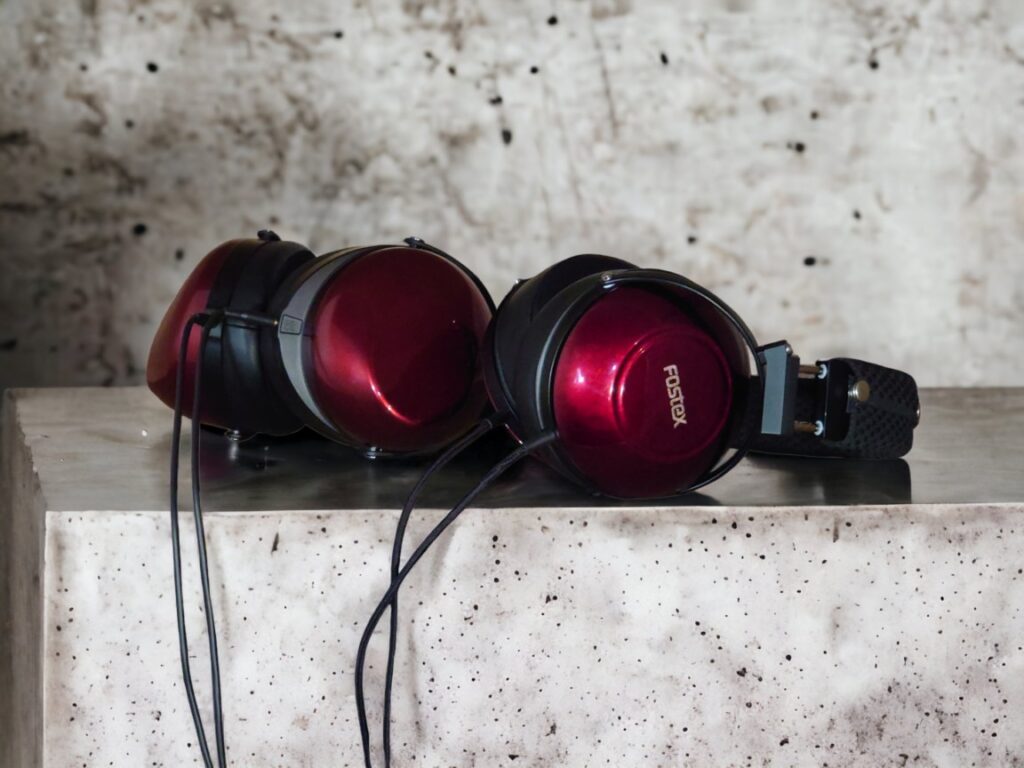
FOSTEX TH-900 VS HE-R9
Another flagship headphone with a lot of bass is the TH-900. It’s V-shaped with clear highs and a bit recessed mids. It is a lot more expensive than the HE-R9 and is on a totally different level when it comes to precision and detail. The bass is strong and tight on the TH-900. Nothing sounds muffled. One thing that holds it back is the recessed mid-range and the HE-R9 can in some cases feel more coherent, it’s bassy and dark, and sometimes that’s just really nice.
BEYERDYNAMIC DT1770PRO VS HE-R9
I’ve made a separate post about these two headphones. They are primarily made for very different audiences, but still, I thought I might as well do a proper comparison.
You’ll find the full article here.
In terms of design and build, for home use, I find the HE-R9 is more lightweight and comfortable. However, the DT1770PRO doesn’t lag much behind in comfort and the construction is very robust.
The HE-R9 is easier to drive with a 60-ohm impedance and 100 dB sensitivity. The DT1770PRO is a high-impedance headphone with 250 Ohms but relatively a friendly 102 dB sensitivity. This will affect their performance with different audio sources. On most amps, the DT1770PRO will need more juice.
The HE-R9 delivers a significantly more hefty bass response. It has less upper midrange and treble energy. It is a dark and bassy-sounding headphone. In contrast, the DT1770PRO provides a balanced and neutral listening experience. Anything else would of course be shocking because this is a headphone aimed at professionals.
Subjectively speaking, the preference order of these headphones varies across different music tracks. The HE-R9 shines in delivering a warm, enveloping atmosphere for certain tracks, whereas the DT1770PRO excels in clarity, neutrality and precision. It’s more revealing across the spectrum and a better all-around headphone.
If you are a professional or doing mastering and mixing you should not even consider the HE-R9. It is a coloured headphone. However, it can definitely be enjoyable and whether or not you like it will depend on your personal preferences and the music you listen to.
SENNHEISER HD560S VS HE-R9
The HD560S is a lightweight open-back headphone. With the HE-R9 on sale, these headphones are in the same price range. The HD560S is a lot more neutral-sounding and balanced headphone. The HE-R9 has more bass and less treble. It’s basically the same story as with the DT1770PRO: The HD560S is neutral and balanced, and the HE-R9 is dark and bassy. Sometimes, dark and bassy is great – sometimes it’s not.
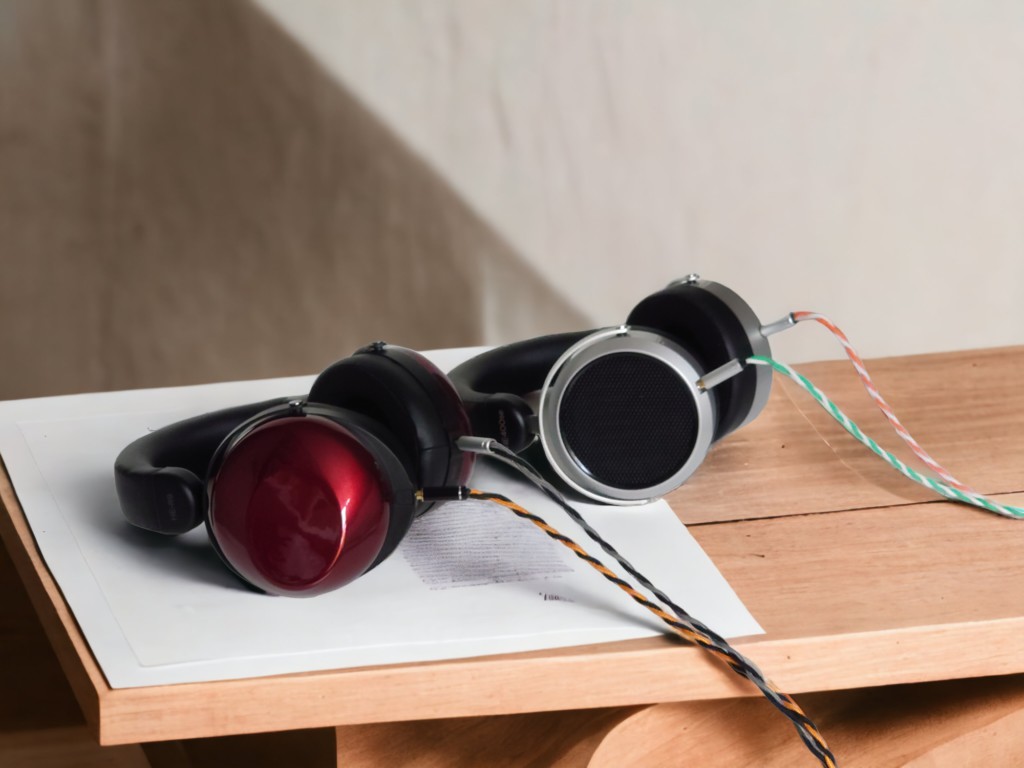
HIFIMAN HE400SE VS HE-R9
The HE400SE is Hifiman’s entry-level open-back planar magnetic headphone. It is a more neutral sounding than the HE-R9, but it does require more power. I’ll do a separate review on the HE400SE soon. However, I can say that it’s a very good headphone, especially for the money. It presents a much more airy, balanced and neutral sound. The bass is solid and punchy. I’m very impressed with the HE400SE. Great detail and soundstage. It’s not especially bassy nor especially bright sounding. It’s a great all-rounder. Again, the HE-R9 is much darker, with a fullness and bass presence that’s quite unique – for better and for worse.
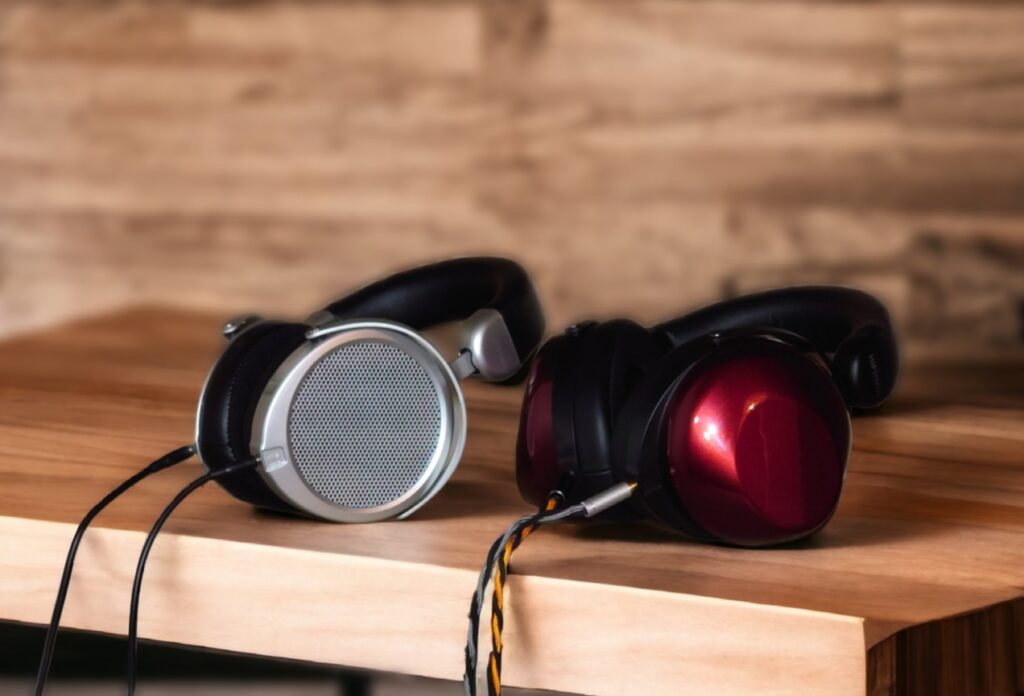
HIFIMAN DEVA PRO VS HE-R9
This is another one of Hifiman’s entry-level planar magnetic headphones. It is interesting to compare this to HE-R9 because both can use the Bluetooth adapter called Bluemini. The Deva PRO is easier to drive than the HE400SE but still needs more power than the HE-R9.
I find the Deva PRO to sound gorgeous and will return with a full review. Comparing it to the HE-R9, will just be repeating myself. The Deva PRO is closer to neutral. The HE-R9 is just something different. Again, more bass, less treble. As with the HE400SE, the Deva PRO gives you a more detailed, less meaty sound than the HE-R9.
AMPLIFICATION
With 60 Ohms and 100 dB, the HE-R9 isn’t hard to drive and I didn’t really find it to be picky on the amplifier. However, I mostly listened to it with a powerful amp. It sounds good with desktop amps like the Auralic Taurus, Topping A90, Monolith THX AAA 887, Fiio K5 PRO and Schiit Magni Heretic. It works with Dragonfly Black and Cobalt and THX Onyx too.
TECHNICALITIES AND POTENTIAL
If you calibrate your brain and your ears to the unusual sound-signature, you might find that the detail level is actually quite a lot higher than you first get the impression of. If you EQ down the bass, there’s more detail than if you don’t. From what my ears are telling me, the main problem with the HE-R9 is resonance issues in the cups. That is of course always a big challenge with closed-back headphones.
I have a strong feeling that the driver unit and the diaphragm are very good and reproduce quite a lot of detail and texture etc. To me, it sounds like what is doing most of the colouring and creating most of the distortion is resonances from the cups. I have seen pictures and there is nothing in there except a foam pad. This is good news for modders, there’s a lot of room to play around.
In other words, I find the HE-R9 a headphone that has a lot of potential. If you don’t like the HE-R9 stock tuning, you can start modding – or send them to e.g. JM Audio.
I am really looking forward to the next iteration of this headphone and hope that Hifiman does take notes of the feedback from the enthusiast community. Most closed-back headphones have room for improvement. That’s why they have always been modded. Lawton Audio has been around for ages – modding Denon and Fostex headphones, Dan Clark aka Mr. Speakers and now Mr “Dan Clark Audio”, started out modding the Fostex T50RP – which is probably the most modded headphone in history. Maybe the HE-R9 is the next T50RP? Who knows.
On a side note: The HE-R9 sounds better when wearing glasses. Why? Because they break the seal, reducing the bass. Some vent holes in the cups might do some good. This is totally the opposite of Hifiman open-back planars, which deliver increased bass when breaking the seal.
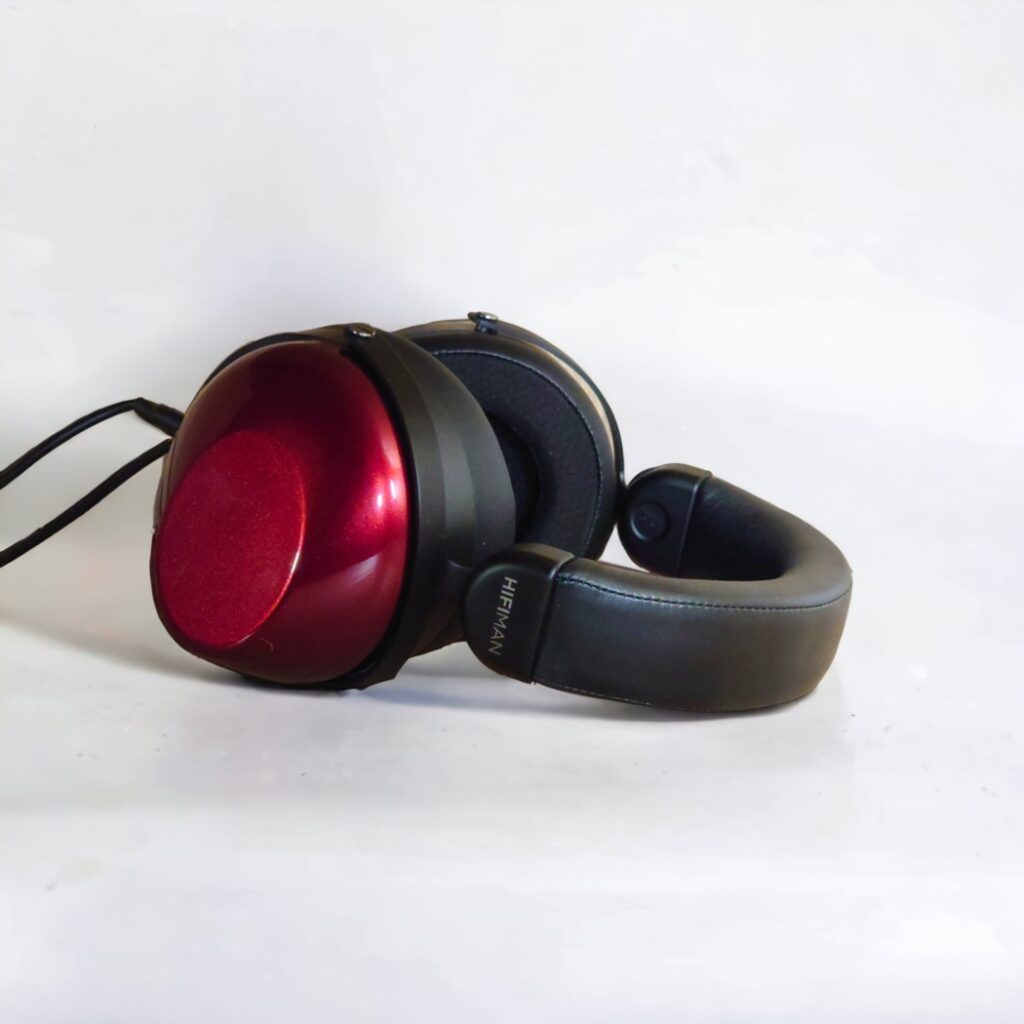
CONCLUSION
The HE-R9 is not anywhere near a neutral-sounding headphone. Professionals or anyone doing mixing and mastering should not even consider it. It’s really heavy on the bass and the treble is unusually polite.
However, I find the HE-R9 quite appealing and enjoyable for a lot of music – once your brain has calibrated itself to the tuning. I like the delicate mid-range, and I like the dark but detailed treble. I like the heavy bass.
If you hate the HD650, the LCD-3 or other dark-sounding headphones, this isn’t for you. This is for those who want a second (or 3rd, 4th or 5th …) headphone with a distinct tuning. Sometimes it’s wonderful, sometimes it’s just not the right flavour. The HE-R9 certainly has its weaknesses, but also has its strengths. Some listeners might find this headphone unsatisfactory, some will find it very enjoyable with the right music. I belong to the latter group. If you bring EQ into the equation, it gets a lot more flexible.
The HE-R9 is a headphone with strong personality, and it doesn’t tick all the boxes. However, I like what Hifiman is trying to do with this one. Not all headphones should sound the same, and the HE-R9 is certainly different.
Products mentioned in this article:
Hifiman HE-R9, Hifiman HE400SE, Hifiman Deva PRO, Sennheiser HD560S, Fostex TH900, Denon AHD-D7100, Beyerdynamic DT1770PRO
You can also check out the Amazon Hifiman Store.
We make earnings through affiliate links and any purchase you make on Amazon or Linsoul clicking one of our links will give us a small provision at no cost to you.
We only get a provision for items that are not returned, so there’s no incentive for us to recommend something that’s not good.
Linsoul : Headphones, Earbuds, Wireless Earbuds, Desktop DAC/AMP, Portable DAC/AMP, Digital Audio Players,
Amazon: Headphones, IEMs, Headphone Amplifiers, Home Audio or Anything else.
.
If you enjoyed this article or other content on The Headphoneer, you might consider leaving a small donation to keep this website up and running. No donation is too small. Thanks for supporting us!
If you like our work please follow us on Instagram, Facebook and Twitter , it will help us grow. Sharing is caring 🙂


